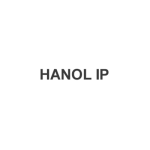How are signature designs such as the Hermès Birkin bag, the Chanel No. 5 perfume bottle, or Disney’s Mickey Mouse character protected in Korea? Regardless of whether such designs are registered or their rights expired, protecting their signature product designs continuously from another’s use is probably the most important thing to the brand owners. As well as product designs, the commercial look and feel of business places, such as signage, exterior and interior design, decoration are the same in this regard.
All of these constitute “trade dress”, and they can be protected by a number of intellectual property laws in Korea. One such law is the Design Protection Act. However, if trade dress has been used for a long time by a brand owner, the design rights might have already expired, or they would not meet the novelty requirement under the Design Protection Act. Furthermore, designs of a building’s exterior or interior are not yet subject to design registration in Korea. Therefore, considering only a design right may not be the best strategy for trade dress.
Another law that protects trade dress in Korea is the Trademark Act. Under this law, a typical form of trade dress, namely:
The shape of a product or its package; or
The appearance of the exterior or interior of a store, can be registered as either a device mark or a three-dimensional (3D) mark.
Although trademark registration for 3D shapes has been allowed for over 25 years, it has been quite difficult to register 3D marks due to the strict distinctiveness requirements in Korea. Many unique or unusual shapes of goods were rejected previously as long as they depicted the shape of the goods. Under these strict standards, the well-known shapes of LEGO bricks, YAKULT bottles, and Nestle’s POLO mint with the hole had once been rejected.
However, after a recent relaxation of the distinctiveness requirements for 3D marks through several amendments of the examination guidelines, registering 3D marks has become much easier. Now, the famous Hermès Birkin bag and the Chanel No. 5 perfume bottle have both enjoyed protection as 3D trademarks in Korea since the 2020s.
Even if the shape of a product was successfully registered as a 3D trademark and thus recognised as having inherent or acquired distinctiveness, enforcement of the 3D trademark right has posed another problem in Korea. This is because some courts considered that the opposite party’s use of 3D shape was not regarded as use of a trademark under the Trademark Act.
As with registration, there are also positive changes in the enforcement sector. Recently, the Supreme Court and IP High Court have made several decisions acknowledging that the shape of the defendant’s product falls within the scope of the trade dress holder’s trademark rights (Supreme Court Decision 2019 Hu 10418, and IP High Court Decision 2021 Heo 3215, published on December 16, 2021, and December 2, 2021, respectively).
As a natural outcome of these changes, the number of trademark filings for trade dress is continuously increasing, and this trend can also be seen in the filings of famous characters as trademarks whose copyrights will expire soon, such as Mickey Mouse (Steamboat Willie) in 2024.
If there is no trademark registration, trade dress can still be protected under the Unfair Competition Prevention and Trade Secret Protection Act (UCPA) in Korea. Effective September 29, 2023, the UCPA has been amended to recognise an exception to consumer confusion for a good faith prior user’s use of signs identical or similar to well-known business signs, including trade dress. At the same time, the owners of well-known signs have a right to request that a good faith prior user make and use indications or labels to prevent confusion or misunderstanding, balancing the interests of trade dress owners and the good faith prior users.
Among the many intellectual property rights available, trademark protection seems to be the most versatile for trade dress in Korea, and so is often the first form of protection recommended. However, despite the relaxed requirements, it is still true that trade dress marks are, by their nature, more difficult to register than other ordinary marks. Therefore, to protect trade dress more powerfully, we propose the following to trade dress owners:
If the trade dress does not have strong inherent distinctiveness, file the marks “in combination with” the distinctive elements, or file the “device marks first”, because it would be relatively easy to obtain registrations of the device mark, as the device would not directly display the shape of the product, and fewer functionality rejections are raised for device marks than 3D marks. Once a device mark is registered and then exclusively used, it would be helpful to obtain registrations of 3D marks for the same shapes at a later date; and
If the trade dress has a unique or unusual shape, it would be a wise choice for trade dress owners to register their trademarks as both device and 3D marks in Korea.











